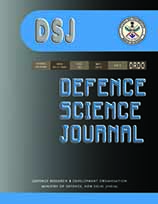Insights into Responses to Extreme Environmental Conditions in Humans from Studies on Saccharomyces cerevisiae
DOI:
https://doi.org/10.14429/dsj.65.8651Keywords:
Saccharomyces cerevisiae, gene expression, environmental stress response, cross-species microarrayAbstract
The versatility of the yeast experimental model has aided in innumerable ways in the understanding of fundamental cellular functions and has also contributed towards the elucidation of molecular mechanisms underlying several pathological conditions in humans. Genome-wide expression, functional, localization and interaction studies on the yeast Saccharomyces cerevisiae exposed to various stressors have made profound contributions towards the understanding of stress response pathways. Analysis of gene expression data from S. cerevisiae cells indicate that the expression of a common set of genes is altered upon exposure to all the stress conditions examined. This common response to multiple stressors is known as the Environmental stress response. Knowledge gained from studies on the yeast model has now become helpful in understanding stress response pathways and associated disease conditions in humans. Cross-species microarray experiments and analysis of data with ever improving computational methods has led to a better comparison of gene expression data between diverse organisms that include yeast and humans.
Downloads
Published
How to Cite
Issue
Section
License
 Where otherwise noted, the Articles on this site are licensed under Creative Commons License: CC Attribution-Noncommercial-No Derivative Works 2.5 India
Where otherwise noted, the Articles on this site are licensed under Creative Commons License: CC Attribution-Noncommercial-No Derivative Works 2.5 India


